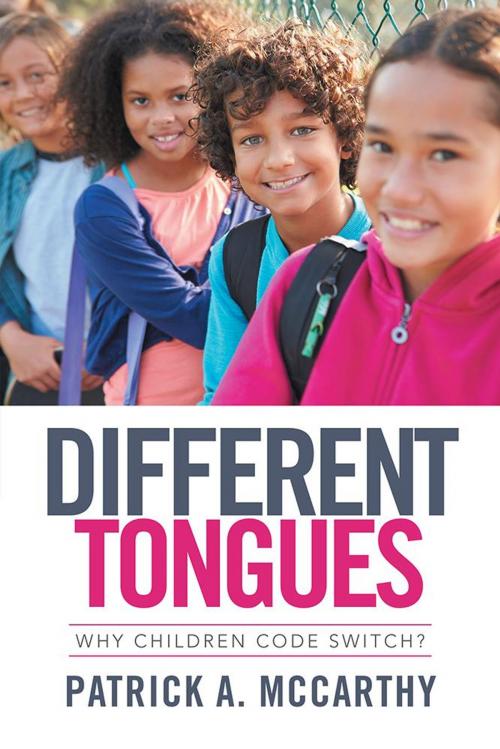Different Tongues
Why Children Code Switch?
Nonfiction, Reference & Language, Education & Teaching, Educational Theory, Bilingual Education, Teaching, Language Arts, Linguistics| Author: | Patrick McCarthy | ISBN: | 9781504351492 |
| Publisher: | Balboa Press | Publication: | October 7, 2016 |
| Imprint: | Balboa Press | Language: | English |
| Author: | Patrick McCarthy |
| ISBN: | 9781504351492 |
| Publisher: | Balboa Press |
| Publication: | October 7, 2016 |
| Imprint: | Balboa Press |
| Language: | English |
Different Tongues (Why Children Code Switch?) is a valuable book that gives us answers to endless questions that we have as parents who wish to raise bilingual children: Will teaching the child two languages end up with the child not speaking any language clearly? What role do parents play in controlling their childrens code switching? When children switch languages when speaking, should this be seen as meaningful, insightful or not to be tolerated? Does where I live have an impact on how my children code switch? ; The father is the only one who speaks the minority language, is this enough input for the child to be brought up bilingually. These questions and many others that parents are faced with are discussed in this book. Actually, Different Tongues (Why Children Code Switch?) proved quite valuable to me when I began my own family. I was an Anglophone married to a French Quebecer and I lived in Quebec Canada, which is French. I was the only English speaking person in my childrens lives for the first five years of their lives, so I was not sure if bilingualism was feasible for our family since I spoke the minority language. In fact, this book has enabled me to understand how children learn two languages at the same time; how children may mix their languages in the early years, but soon after this stage, the child begins to code switch, within his two languages, in meaningful ways. Different Tongues (Why Children Code Switch?) gives a new perspective on childrens code switching in todays world. In the past, it was seen as inherently bad, whereas in this book, it shows how a child can now use code switching to more clearly transmit his language, as a contextualization tactic; and this is now seen as a clear advantage that the child possesses as compared to others who are not bilingual. In fact, this advantage is definitely a paradigm shift for todays parents when it comes to their childrens code switching. Patrick McCarthy has contributed to the literature on bilingual development by providing an excellent overview of issues surrounding code-switching in young children. As his book points out, code-switching is normal behavior in children exposed to two or more languages, as it is in adults. Parents and teachers will find useful information about childrens bilingual development in this book. Kirsten Hummel Professor Director in charge of the Bachelor of Teaching English Second Language Universit Laval Qubec G1V 0A6
Different Tongues (Why Children Code Switch?) is a valuable book that gives us answers to endless questions that we have as parents who wish to raise bilingual children: Will teaching the child two languages end up with the child not speaking any language clearly? What role do parents play in controlling their childrens code switching? When children switch languages when speaking, should this be seen as meaningful, insightful or not to be tolerated? Does where I live have an impact on how my children code switch? ; The father is the only one who speaks the minority language, is this enough input for the child to be brought up bilingually. These questions and many others that parents are faced with are discussed in this book. Actually, Different Tongues (Why Children Code Switch?) proved quite valuable to me when I began my own family. I was an Anglophone married to a French Quebecer and I lived in Quebec Canada, which is French. I was the only English speaking person in my childrens lives for the first five years of their lives, so I was not sure if bilingualism was feasible for our family since I spoke the minority language. In fact, this book has enabled me to understand how children learn two languages at the same time; how children may mix their languages in the early years, but soon after this stage, the child begins to code switch, within his two languages, in meaningful ways. Different Tongues (Why Children Code Switch?) gives a new perspective on childrens code switching in todays world. In the past, it was seen as inherently bad, whereas in this book, it shows how a child can now use code switching to more clearly transmit his language, as a contextualization tactic; and this is now seen as a clear advantage that the child possesses as compared to others who are not bilingual. In fact, this advantage is definitely a paradigm shift for todays parents when it comes to their childrens code switching. Patrick McCarthy has contributed to the literature on bilingual development by providing an excellent overview of issues surrounding code-switching in young children. As his book points out, code-switching is normal behavior in children exposed to two or more languages, as it is in adults. Parents and teachers will find useful information about childrens bilingual development in this book. Kirsten Hummel Professor Director in charge of the Bachelor of Teaching English Second Language Universit Laval Qubec G1V 0A6















